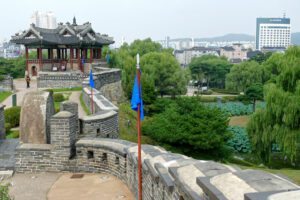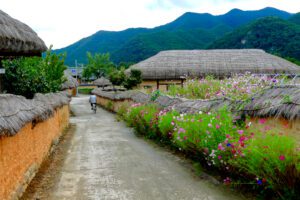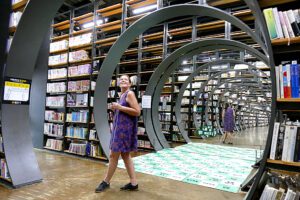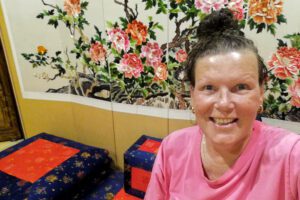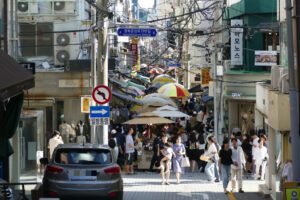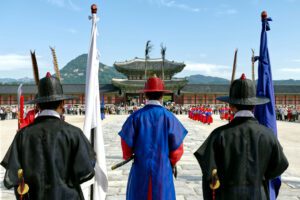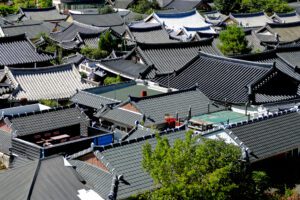Located almost 100 kilometers north of the former imperial city of Gyeongju, Andong seems to stand in the shadow of its smaller yet more glorious sister. Far too few international visitors foresee a stop in Andong on their trip to Korea.
Not me.
The only thing I regret regarding my visit to Andong is that I couldn’t stay for a few days longer since the city has an unexpected amount of tradition, culture, and absolutely authentic vibes to offer. Hence, it’s time to experience Andong where the folk heritage of Korea has been living on for generations.

Andong – the Spirit of Korea
Andong is the largest city in Korea’s northern Gyeongsangbuk-do Province. Their confident slogan is Andong – the spirit of Korea. Well, that’s ambiguous, because despite all the modernity, the traditional side of Korea is more noticeable in Andong than in many other cities. But also, a well-known – and notoriously popular – Korean spirit, namely the rice liquor Soju, is brewed right here.
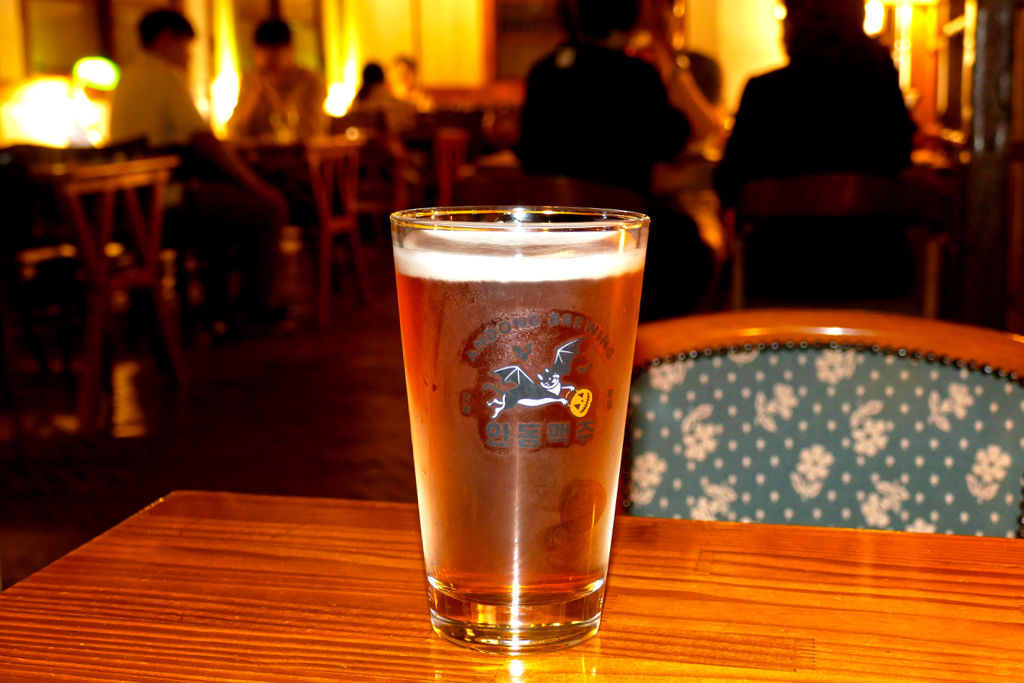
In addition, Andong’s small private breweries make extremely delicious artisan beer. And of course, there are local specialties such as Andong-style Gan-Godeungeo, a salted mackerel dish.
Then, once you’re done trying Andong’s delicious staples, it’s time to work off some of those calories, and there are some great places in the city to do that.
Off to a Bumpy Rainy Start
I’m completely soaked. It had rained for the last three days. Finally, dry weather is forecasted this afternoon when we arrive in Andong. In some parts, the sky is already slightly blue. A glimmer of hope – literally.

After an unusually quick check-in – the receptionist shows me a piece of paper and asks, is that you? When I say yes, he hands me a key card – no further questions asked and no ID requested. So, after the almost disturbingly quick check-in, I’m happy to have plenty of time to explore what’s the self-proclaimed Spirit of Korea.
As I walk towards the Folk Village, I begin to sweat. I’m wearing a thin blouse, but unfortunately, I’m still wearing my long travel pants. Actually, they are made of thin linens, yet, they are long. It’s humid and warm, I can feel sweat running down my entire body, soaking my clothes. I roll up my pants to the knees. It’s better that way. Still far too warm, but better.
As I climb the hill to the Seongjingol Mural Village, first drops fall on my head. Well, it won’t be that bad, probably just one cloud, I pep-think myself.
Sadly, I’m too optimistic. Many more drops follow and finally, they form a shower. This shower quickly transforms into endless rain.
When It Rains, It Pours
I don’t want to let bad weather spoil my plans for the day. The bus to the Folk Village runs very irregularly, the next one doesn’t arrive for another two hours. Never mind, I just walk the two kilometers. Yes, it’s raining very hard now.
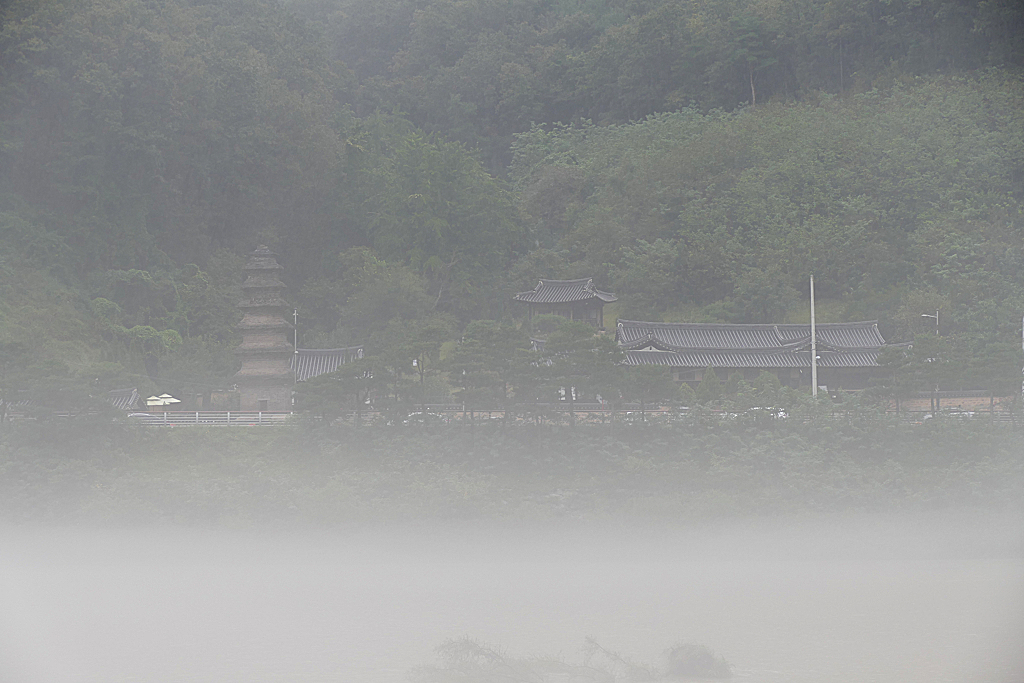
My blouse is already completely soaked – still from sweat, but now also from the rain. Despite my rain cape, the liquid sunshine manages to creep through the collar and sleeves from where the humidity spreads over my entire upper body. Protected by the thick plastic of the cape, at least I don’t get cold. Somehow, I feel like being in a greenhouse: Wet and warm and covered in plastic.
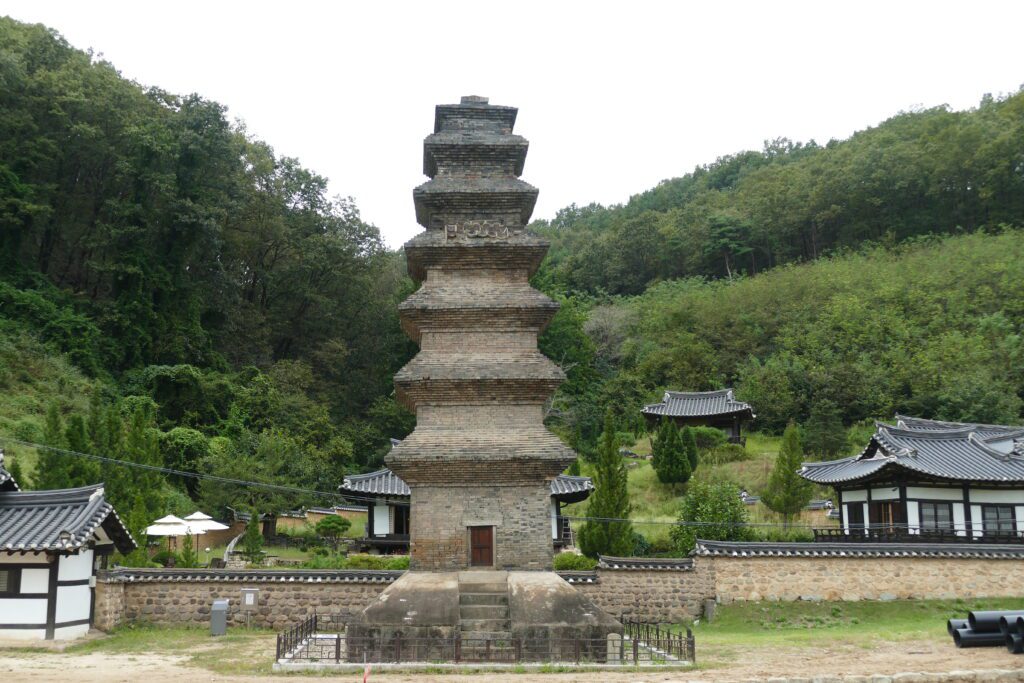
It turns out that there is a wooden footbridge on the southern bank of the Nakdong River. It leads along the river on the edge of a forest to the Woryeonggyo bridge. That’s great. I’m already soaking wet, hence, the pouring rain can’t hurt me.

Maybe it’s not the most prudent decision to walk all by myself on a wooden bridge in the pouring rain and thick fog somewhere I’ve never been before. After my accident in Gran Canaria, I didn’t want to do reckless things anymore. But it’s a solidly constructed path, after all. Yes, there are warning signs about snakes and wild boars and it’s probable that I won’t meet a soul in this weather. But then hopefully no wild boar either.
Calling It A Day
All the while considering that it’s quite unreasonable to walk alone alongside a forest with wild boars in the pouring rain, I keep walking. When a gentleman comes towards me, I immediately feel much safer. So I’m not all alone with the snakes and the wild boars.
Shortly before I reach my designated final destination, the wooden path unfortunately ends. There is a detour that is explained in detail, but unfortunately only in Korean. Well, that’s where it definitely ends for me. Walking along a wooden path in adverse conditions is one thing. Being rerouted over suspicious auxiliary bridges is a whole different story. I’m pretty daring, but this is where the road ends for me – literally.
So I turn around and go all the way back. Only now do I realize how far I’ve actually gone. Way to go, girl!
At the bus stop, I take a photo of the limited timetable and decide to give it another try the next – hopefully dry – day.

On the way back to the hotel, I pass a public SPA, a Korean bathhouse. And since I can’t do anything enjoyable in this weather and the day is almost over, I decide to try another adventure: For the first time, I’ll visit a Korean SPA.
How that went? Great! I describe it in detail in my post on All You Need to Know Before Visiting a Korean Spa, so you might want to check that out.
I Can See Clearly Now, the Rain is Gone
Literally! Contrary to the pessimistic forecast from my weather app, it is dry the next morning. In some places, there is even a bit of pale, shy blue mixed in with the light gray clouds. After the past day, for me, this is as good as it gets.
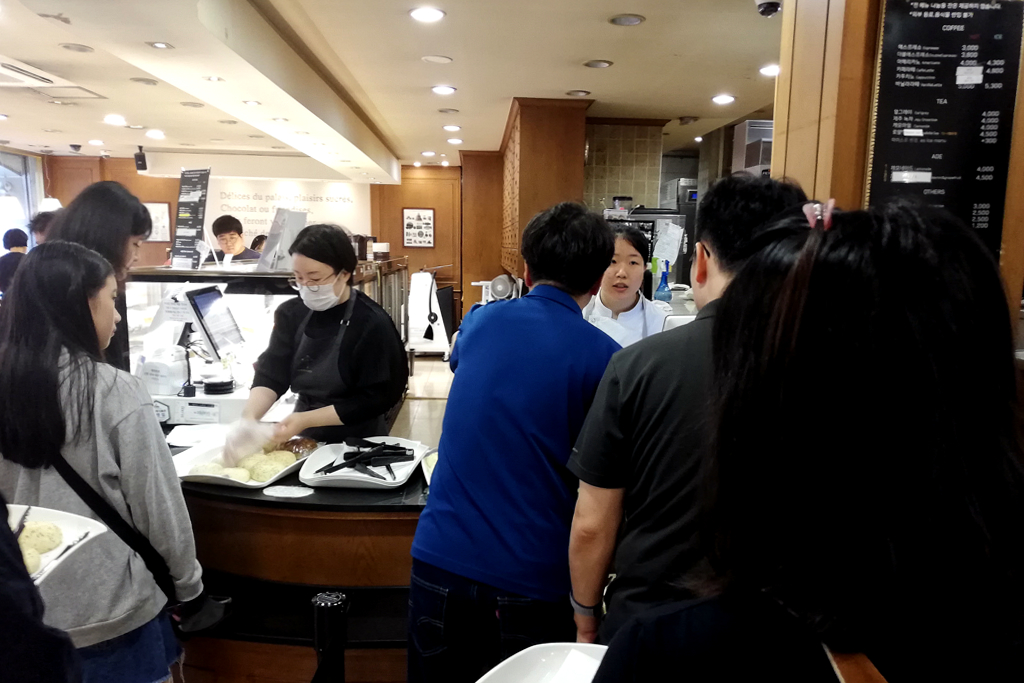
At the city’s most famous traditional bakery, Mammoth, I munch on two of their famous soft buns stuffed with cream cheese and am ready to give Andong a second chance.
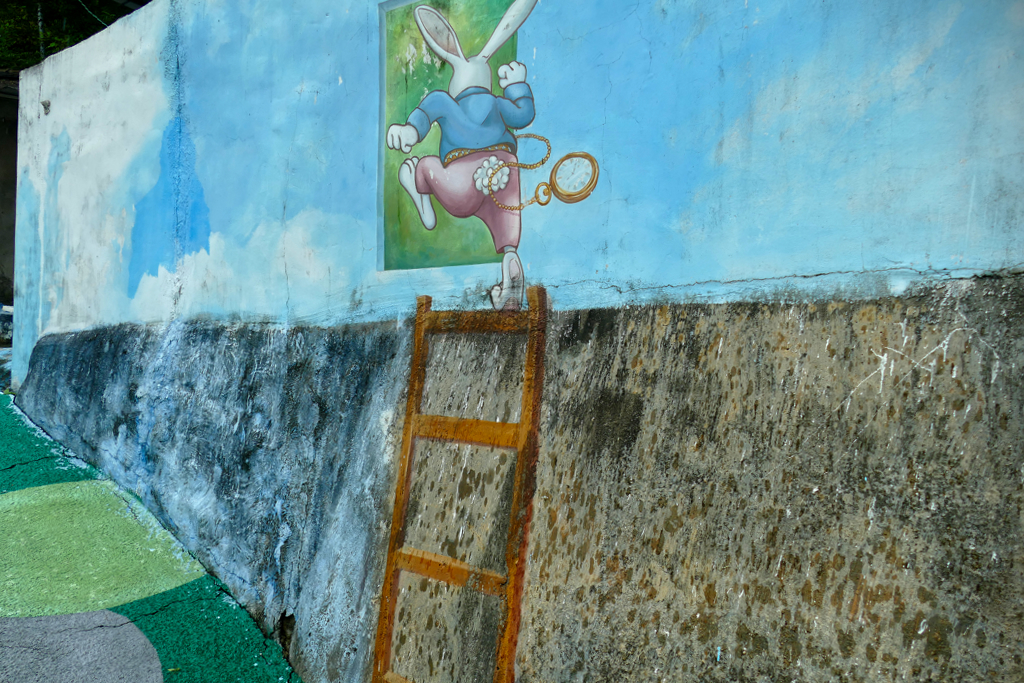
My hotel is not exactly the Taj Mahal among Andong’s lodging options, but it is in the middle of the shopping area with tons of different stores, bars, and restaurants. A lively, very friendly neighborhood.
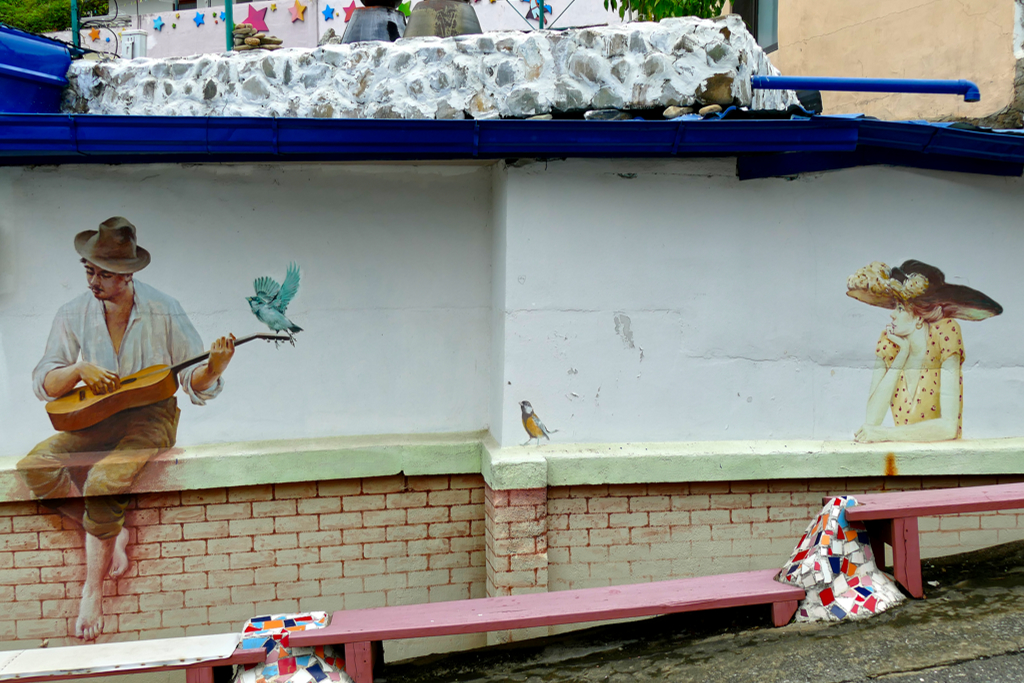
Just a stone’s throw north is Andong’s Culture Village. Like in all Korean Culture Villages, there’s a handful of small, crooked houses clinging to a very steep slope.

As I explain in my post Culture Villages in Korea: Real People, Real Art, these so-called culture villages exist in almost all Korean cities where they have grown more or less out of poverty in inhospitable parts of the city. They are in places where the topography doesn’t allow the construction of those modern yet soulless high-rise housing developments that you’ll find all over Korea.
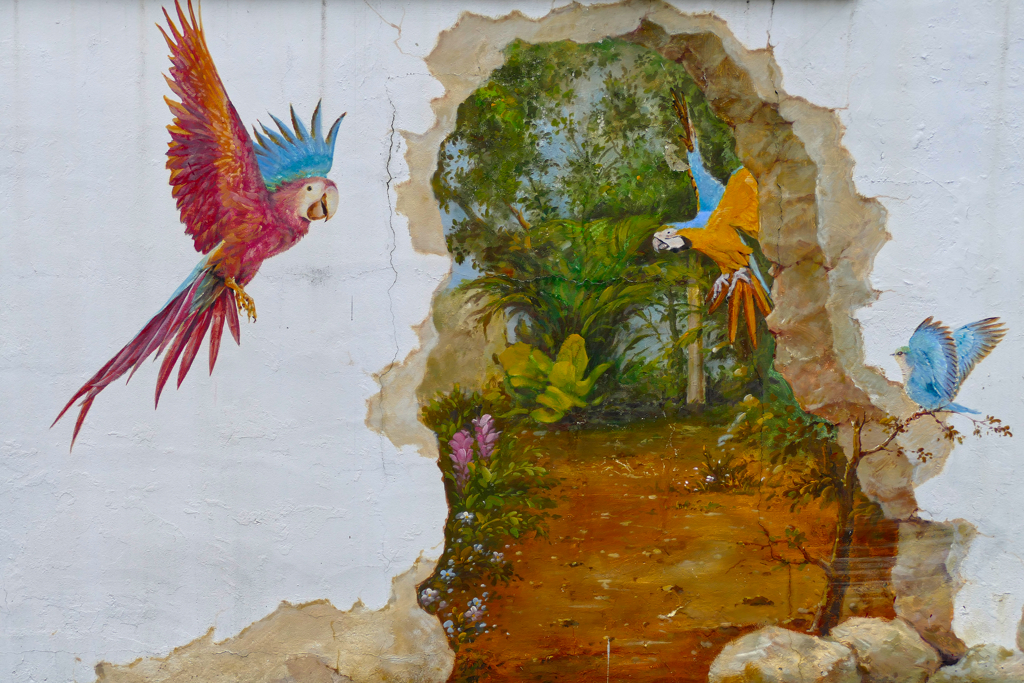
The Culture Villages are traditionally the home of the social lower class. They are dwellings of simple craftsmen and emigrants. In recent years, artists – and inevitably, hipsters – have discovered the idyllic, picturesque neighborhoods. They painted the facades with alluring murals, and artisan coffee shops and craft stores have opened in some of the properties. One can only hope that these picturesque enclaves do not fall victim to brutal gentrification.
Seongjingol Mural Village
In Andong, the Cultural Village located east of the center is called Seongjingol Mural Village. It was founded in 2009 based on an art project around Andong Dongbu Elementary School. Making my way up through the narrow streets and alleys, I see murals and small sculptures and installations on almost every wall. As I reach the top, I join the statue of a boy taking photos. Together, we enjoy the view over Andong, a city that unexpectedly and despite the unfavorable weather conditions became an absolute highlight of my trip to Korea.
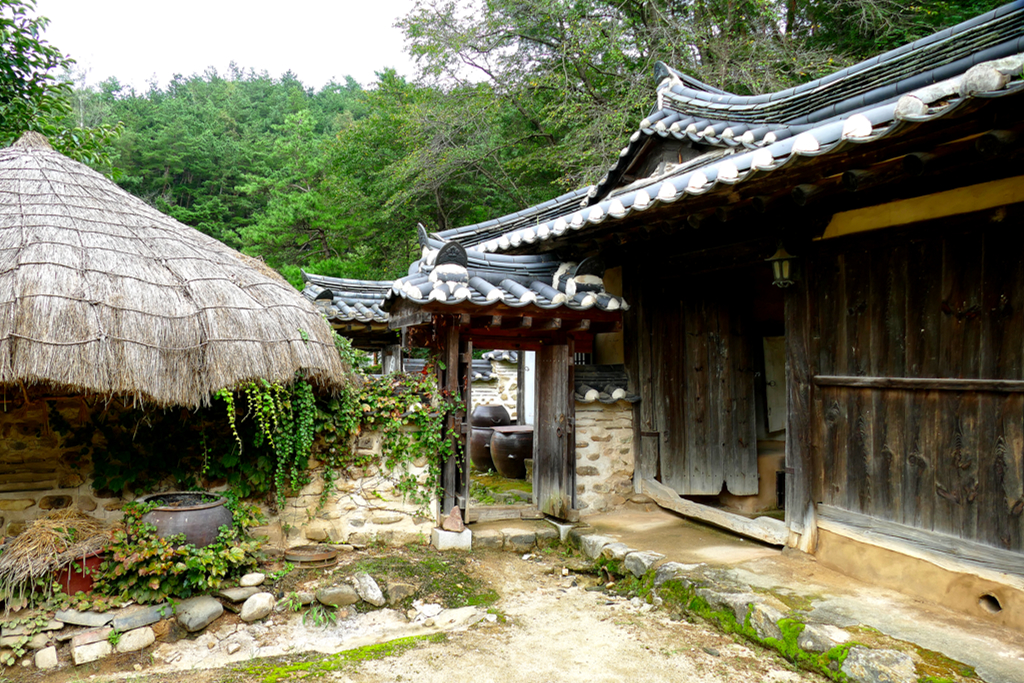
Eventually, I carefully make my way downhill, always trying not to slip on the steeply sloping roads. I try again to get to the Woryeonggyo Bridge by bus. Man, everywhere else in Korea, public buses were basically waiting for me, all I had to do was to get on. Andong seems to think a walk would do me good; and it’s actually only two kilometers alongside the Nakdong River.

It also turns out that yesterday’s rain and fog had literally blocked my view of a comfortable promenade along the northern bank. And so I walk along the river for around 30 minutes and make it safely to the bridge.

Woryeonggyo Bridge And Andong Open Air Folk Museum
The so-called Moonlight Bridge is made largely from pine wood. At 387 meters, it is the longest pedestrian bridge in all of South Korea.
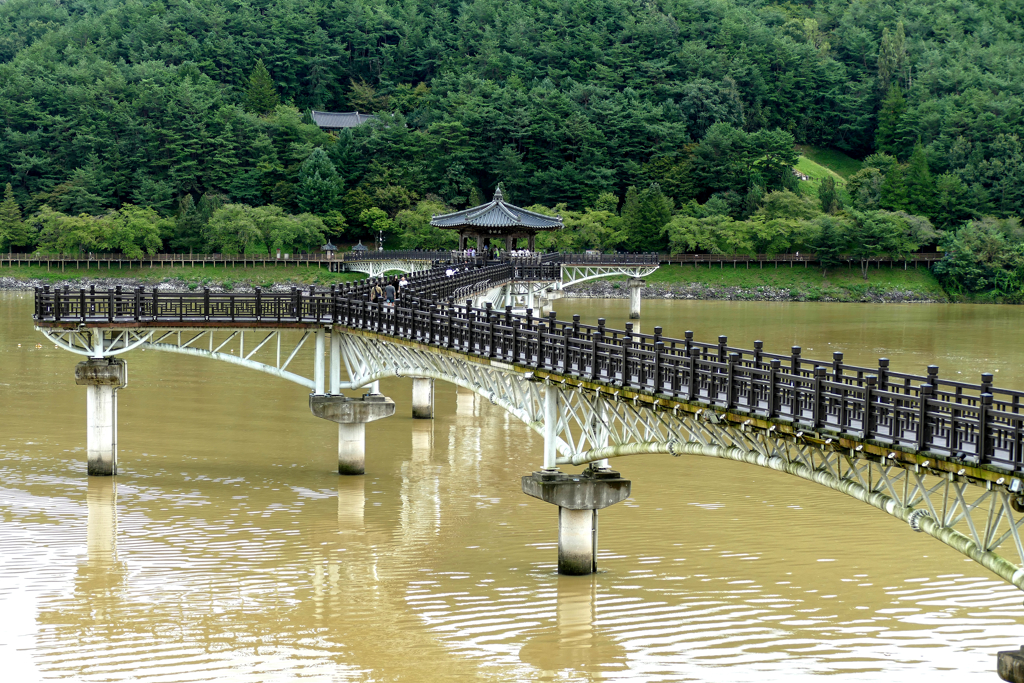
One would think that Confucius had already crossed the Nakdong River over the Woryeonggyo Bridge. But no way, it was actually only completed in 2003 and has immediately become one of Andong’s most important attractions.
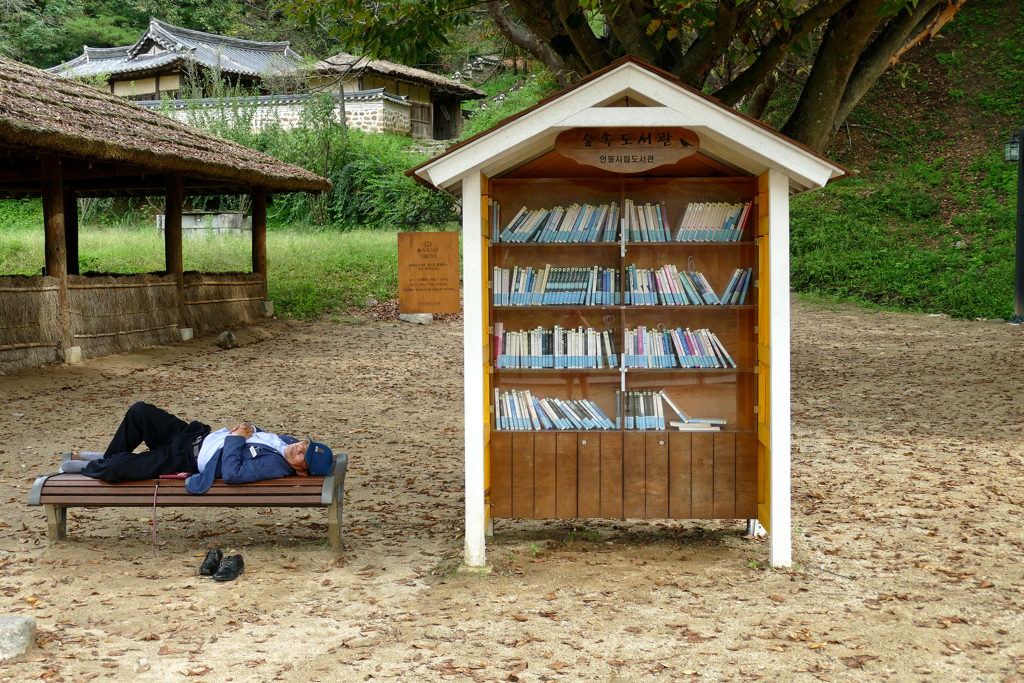
The area on the south bank of Nadkong is definitely more picturesque. There is a promenade shaded by trees and an idyllic park arranged around a lotus pond. And there are traditional houses that were reassembled here to form the Andong Open Air Museum.

Two Jangseungs, Korean totem poles, guard the village and greet you at the entrance. From there, you meander from building to building up a very steep roadway. The fact that the buildings appear somewhat dilapidated from their age and due to the sometimes harsh weather conditions gives the village the morbid charm of a lost place. I like that a lot.

I recommend visiting this site in the afternoon. This gives you enough time to explore the area, relax in the park, and then enjoy the sight of the bridge at sunset and illuminated after dark. While waiting for the night to fall, you can comfortably enjoy dinner at one of the restaurants on the northern bank.
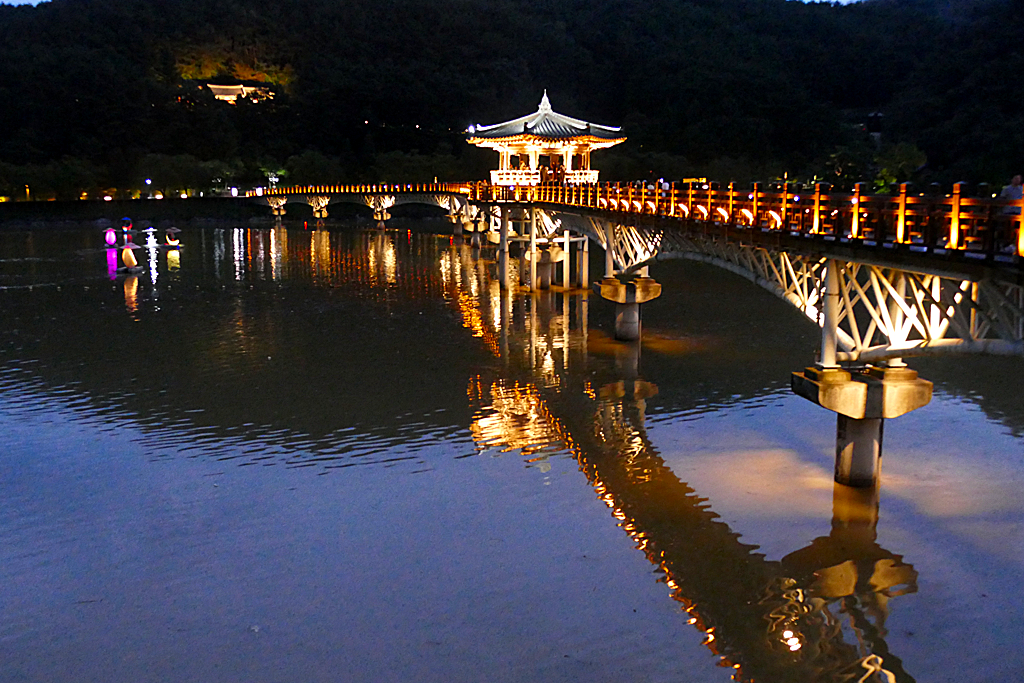
Before I call it a day, I need to remind you that a visit to Andong would not be complete without a half-day tour of the Hahoe Folk Village. It is a traditional village from the Joseon Dynasty, located only around 20 kilometers west of the city. It is very endearing and listed as a UNESCO World Heritage Site since 2010.
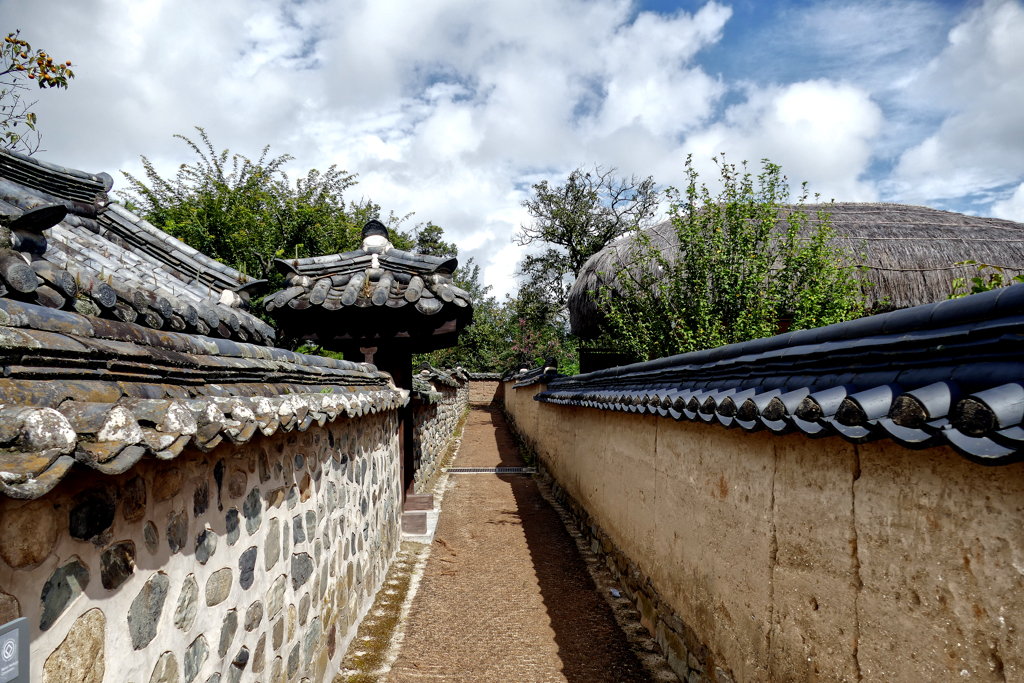
Buses run from Andong and back approximately every hour. In my post An Easy Day Trip to the Hahoe Folk Village from Andong, I present this excursion that you shouldn’t miss out on in detail.
Practical Information
How to Get There
Train
The KTX train gets to Andong from Seoul‘s Cheongnyangni Station in just a bit over two hours. There’s no direct connection from Busan, you therefore need to change trains in Daegu.
As you are departing from Andong, you can buy your ticket at the railway station from vending machines as well as real people and supposedly on the internet. Nevertheless, some fellow travellers told me that they couldn’t pay with their international credit cards. I don’t know since I always bought my tickets before departure at the station.
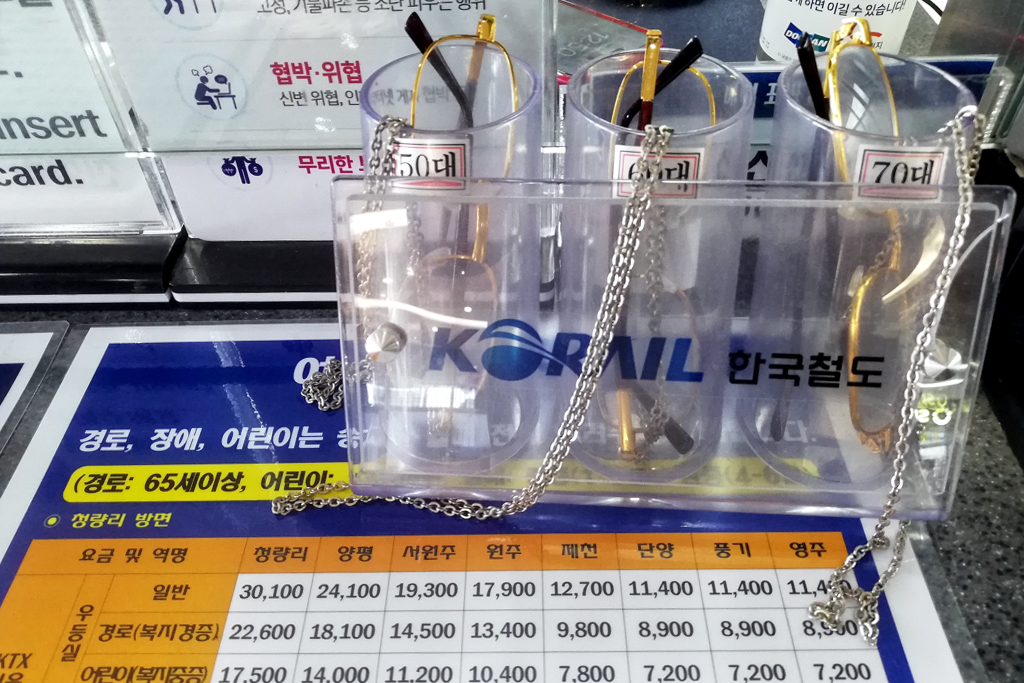
For the sake of completeness, I’d like to inform you that tourists can also obtain the KORAIL Pass. However, I cannot even imagine how much time you have to spend on those trains to get your money’s worth out of them. The cheapest pass costs KR₩ 121,000 for two consecutive days. In comparison, I paid KR₩ 21,000 for a KTX ticket all the way from Andong to Seoul.
Yes, the good news is that my KTX ticket cost only KR₩ 21,000 and I bought it 48 hours before departure. The bad news is that 48 hours is a very short timeframe especially if you intend to travel on a Monday morning. I got my ticket and I got it cheap, but I got no seat.
Does this mean I had to stand for two and a half hours? Well, as I played it smart, I didn’t. Yet other passengers actually did.
Get Up, Stand Up – How to Survive a Standing Ticket on a KTX Train
So, what did I do to secure a seat?
First of all, I boarded the train very early, about twenty minutes before the departure. Obviously, this option only applies if you are boarding at the starting station. In between the train carriages where the doors are, there are foldable seats that early birds like myself can grab on time.
You can also just grab one of the seats that remain vacant for a period of time as the passengers may only board the train at the following stations. However, you’ll have to give those seats up as the rightful seat owner boards the train.
Obviously, the standard seats are much more comfortable than the folding ones. However, there is a high risk of having to give them up again very soon.
When my train left Andong half-empty, it was very tempting to sit down in one of those comfortable seats. But then I saw that the train would stop at seven stations before it reached Seoul. If I were evicted from my seat, my slightly more uncomfortable folding seat would certainly be taken. Then, I had to stand for the rest of the journey. Two and a half hours in an upright position is a long time.
Bus
As a matter of fact, I took the train only twice during my entire three weeks in Korea as the bus stations were often more conveniently located. Also, I went to places where there were no train stations.
For travel between cities, towns, and villages, so-called express and intercity buses are a great option. They are fast, clean, and comfortable. Fares vary a bit depending on the bus type and the time of the day. However, in comparison with other countries, they are always rather cheap. I always paid KR₩ 10,000 to KR₩ 15,000 for four-hour trips.
You can buy tickets right at the bus terminals from vending machines or very helpful clerks. A shoutout to all the lovely ladies who recommended connections and explained to me what to do despite their lack of English.
The bus terminal and the train station in Andong are conveniently located right next to each other. Hence, if you plan a little more time, you can easily figure out the best route on the spot.
To get to the city center, you can take one of the various public buses or a cab, obviously.
How to Get Around
Public Transport
Now, like anywhere else in Korea, inner-city transport in Andong is comprehensive and efficient although they have only buses and no subway. However, even with the help of my Naver App, I got confused at various times. Somehow the suggested routes were not coherent, connections were different, and there seemed to be major interim changes.
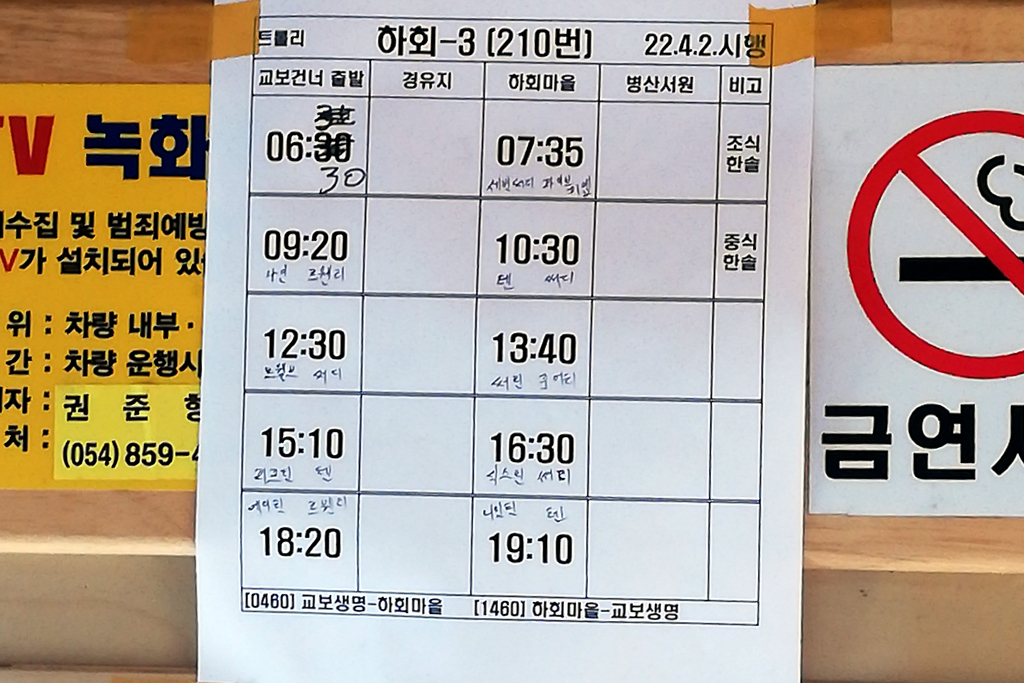
Nevertheless, I did not get lost, I just had to manage some detours and delays. So I recommend you allow a generous time buffer if you have to arrive at a place at a specific time. Obviously, you can pay in Andong’s buses with your T-Money card.
As the Goryeo Hotel** is right in the heart of Andong’s shopping district, you can reach basically all points of interest by walking – if you are an avid walker, that is. As I wrote above, I did walk all the way to the Woryeonggyo Bridge and back, but it took me about half an hour each way.

So, would I recommend exploring Andong by bicycle? Well, it depends on the part of town you want to see. While cycling within the city center and alongside the Nakdong river is a relaxing activity, there are parts of the city like the Seongjingol Mural Village and the Open Air Museum that are located on very steep hills.
Visiting Organized
Although I’m an avid solo-travelling woman, I sometimes like to join organized tours. Not only are they a valid option to go to remote places since I’m not driving. They also allow me to meet fellow travellers – for just a short moment or a lifelong friendship.
Therefore, here are some great ideas of what to do when visiting Andong. Especially during high season, pre-booking online will guarantee your place at the activity of your choice*:
Where to Stay
To this day, I’m not sure if the Goryeo Hotel** doesn’t also cater to local lovebirds. Normally, I do keep my mind out of the gutter, but I think I caught certain clues. Be that as it may, the Goryeo Hotel** is super-conveniently located, a bit dim – which I actually consider to be one of the clues – but squeaky clean, and the hosts are incredibly friendly.
I’m sure there are more elegant hotels in Andong, but probably not at such a reasonable price. First and foremost, because of its convenient location, I can wholeheartedly recommend the Goryeo Hotel**.
But if you want to look for other lodging options, you will find them on this map**:
Booking.comWhat to Eat
Not only is Andong the self-proclaimed home of Korea’s Spirit, it is also one of the country’s most famous foodie spots. So if you’re a gourmet, you definitely shouldn’t skip the city. Below I will introduce five dishes that you will not find in this preparation and quality anywhere outside of Andong.
Let’s start with Andong JJimdak, a steamed or braised dish of chicken and various vegetables marinated in a Ganjang-based sauce. The origin of the dish goes back to various legends. The most plausible is that the traders at the Dak Golmok poultry market created the dish to counteract the expansion of Western fried chicken chains.
Then, Andong’s beef is known far beyond the city limits. There are many restaurants that specialize in high-quality beef dishes of which many are served raw. There’s no better way to put the quality to the test!
Guksoo are noodles made from wheat and bean flour and boiled in a light fish broth. They are served with a sauce made from sesame oil, soy sauce, green onions, and chili powder. Thinly sliced vegetables or a crispy fried egg are added as a garnish.

Heotjesabap is a regional variant of Bibimbap, served with Korean soy sauce Ganjang instead of the classic Gochujang pepper paste. Heotjesabap mainly consists of several types of sprouts on white rice. Sometimes, grilled fish and a Korean pancake is added.
Last but not least, this list was not complete without Andong’s salted mackerel Gan-Godeungeo. The fish is prepared in different ways and then served with a selection of Banchan, the famous Korean side dishes.
To my great dismay, as a solo traveller and solo eater, I was sent away at many restaurants because most of them only serve mackerel for at least two people. Why? Beats me!
Cash And Cards
Cash or cards? Most of the time, you can pay with both methods in Korea. Yet, be prepared that although payment goes smoothly most of the time, you might encounter some hurdles here and there.
The least challenging one is that some businesses – especially automated services and machines – accept exclusively card payments.
So far, so good. The problem is that in Korea, they draw a not-so-fine line between local cards and international cards.
In Andong, it happened to me at two coffee shops – one automated, one with real people preparing the drinks – that my card declined.
Also, you can get only money from ATMs that are suitable for so-called global credit cards. Consequently, I’d recommend you have always at least a small amount of cash on you.
But what if a business or an eaterie doesn’t accept cash? Then you can try to pay with your T-Money card – I’m introducing this Korean door opener below. Apart from public transportation, you can pay with T-Money at many convenience stores and some affiliated coffee shops.
And if you cannot pay cash, your international credit card declines, and they don’t take T-Money? Well, then you have to take your business elsewhere.

The currency in Korea is called ₩on. There are bills of 1,000, 5,000, 10,000, and 50,000 and coins of 10, 100, and 500 ₩on.
As of December 2023, the exchange rate is 1,000 ₩on = 0.75 US $ (current rate) respectively 1,000 ₩on = 0.70 €uro (current rate).
T-Money Card
A very Korean means of payment is the so-called T-Money Card. It’s basically a debit card that you have to purchase for an initial price of KR₩ 2,500. You can get the basic T-Money Card at any subway- and train station as well as at convenience stores around the country. However, you can get a free card for instance when buying a SIM Card*.
Eventually, you have to charge it with the amount of your choice either at a ticket vending machine or a convenience store. You can top-up the card in units of KR₩ 1,000 up to KR₩ 90,000 at a time. The total deposit cannot exceed KR₩ 500,000. It’s important to know that you cannot top-up by credit card, you have to use cash. Also, I’d recommend topping it up with smaller amounts in case you lose it.
If you don’t use up the credit on your card by the end of your trip, you get a refund at all retail locations. However, they won’t refund the initial price as well as an additional service fee of KR₩ 500.
As I needed both, a SIM card and T-money, I obtained a combined card through GetYourGuide* and picked it up at Incheon International Airport on arrival. Obviously, you can use the T-Money card even after the SIM card expires.
Connection and Communication
You can connect to the internet without any issue at basically every museum, eatery, café, and hotel, obviously, as well as to open Wi-Fi in many public areas.
As I depended so much on a reliable internet connection during my trip through Korea, I highly recommend getting your personal data either by a mobile router or a local SIM card. I kid you not, the few moments I for some reason didn’t have an internet connection, I felt like travelling blindfolded.
There are prepaid SIM cards by various companies such as KT Corporation, SK Telecom, and LG U+. I got my card from the latter and loved it. LG U+ offers SIM cards, eSIM, as well as portable Wi-Fi. My card came with a T-money card. I obtained it through GetYourGuide* and picked it up at Incheon International Airport on arrival. For unlimited data, they charge between KR₩ 27,500 for 5 days and KR₩ 99,000 for 40 days. I had the 20 days-version for 60,500 ₩on*.
In South Korea, they use plug types C and F. Their voltage is 220 V, and the frequency is 60 Hz. Whereby, nowadays, in general, all these chargers have integrated adapters so that the voltage and frequency don’t really matter.
By the way, you’ll find this information and many more comprehensive travel tips in my post World’s Most Complete Travel Information – an indispensable globetrotter-classic.
Map
On this map, you can see where all the wonderful places I’m introducing in this post are located.
Clicking on the slider symbol at the top left or the full-screen icon at the top right will display the whole map including the legend.
Andong was only one of many amazing places I visited during my road trip through South Korea. To read about the others, go to the main post and take your pick! There, you’ll also find further valuable general information that will make your trip smoother and much more enjoyable.
Pinnable Pictures
If you choose to pin this post, please use one of these pictures


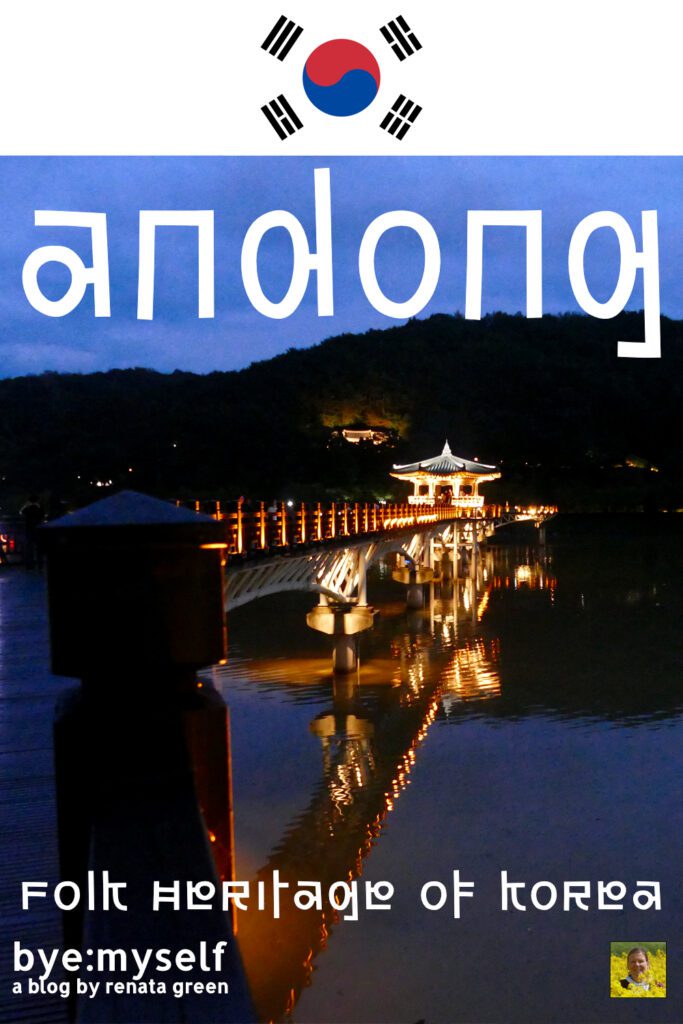
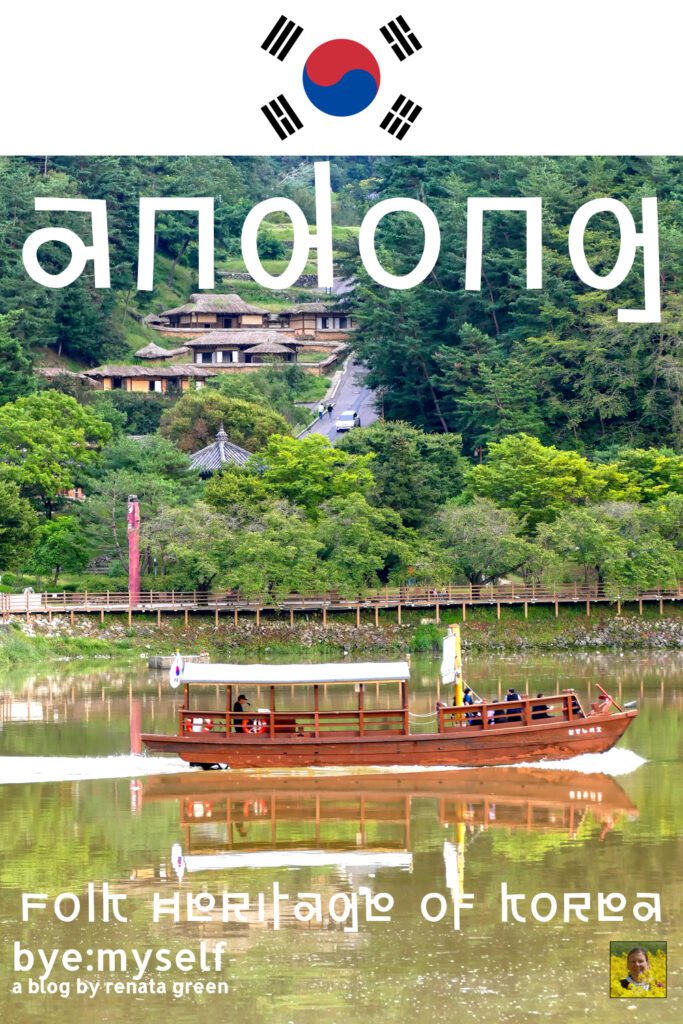
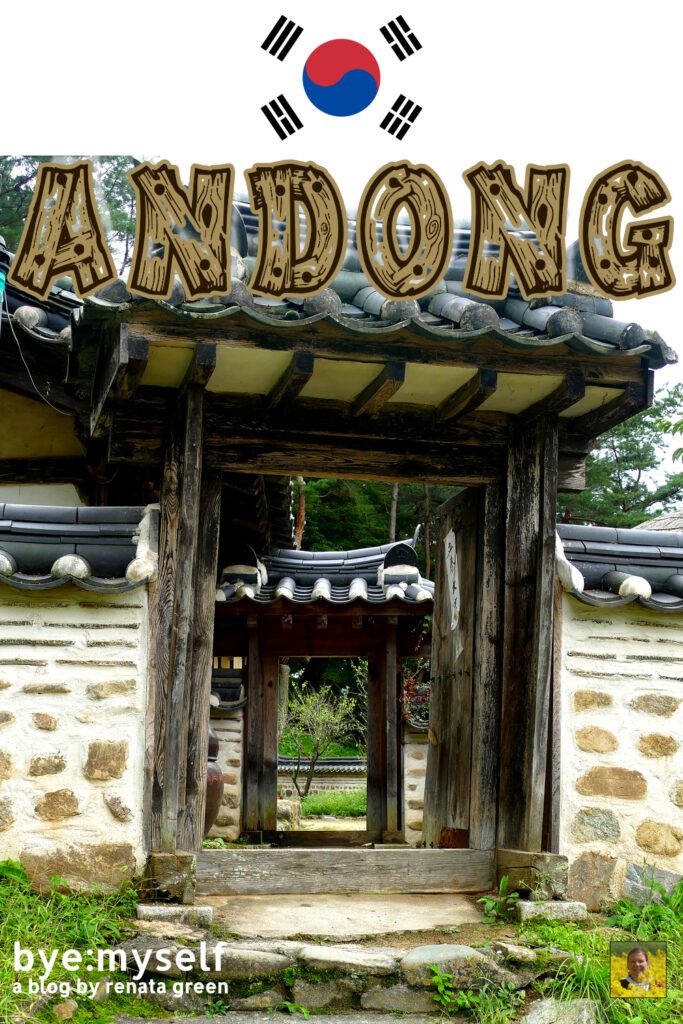
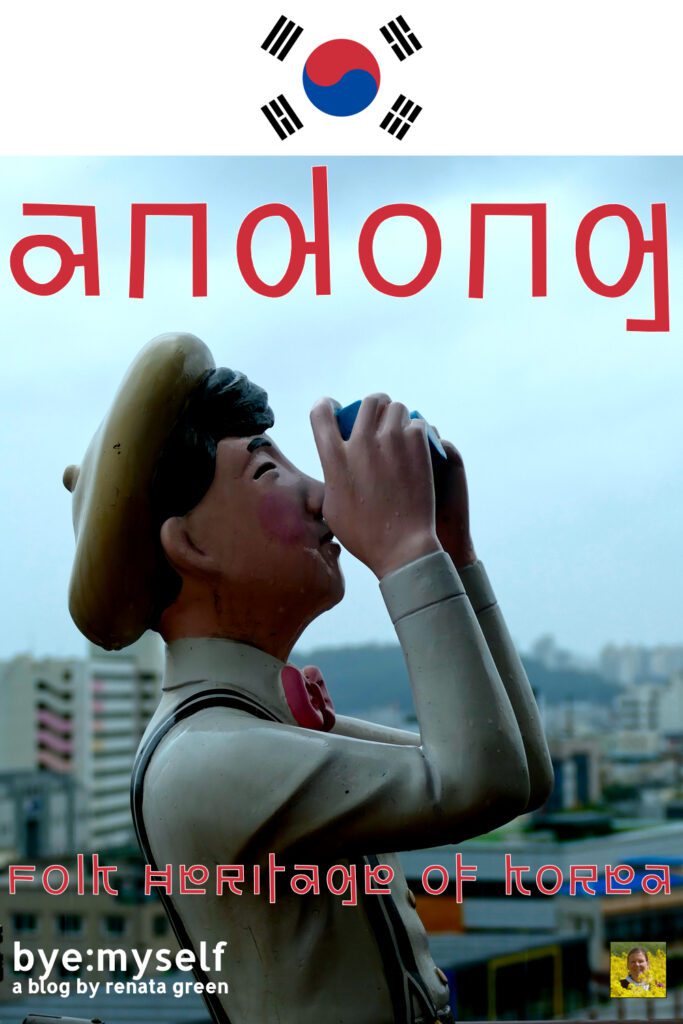
Did You Enjoy This Post? Then You Might Like Also These:
Stroll the Fortress Wall of SUWON
An Easy Day Trip to the Hahoe Folk Village from Andong
Best And Most Beautiful Bookstores in Seoul
All You Need to Know Before Visiting a Korean Spa
7 Best And Most Beautiful Coffee Houses in Busan
The Perfect Itinerary for Three Days in BUSAN
Individual Solo Trip to KOREA – All Your Questions Answered
JEONJU – Cradle of Korea’s Cultural Heritage and Home to the Country’s Best Food
* I received this service free of charge as part of my affiliate cooperation with GetYourGuide for participating in a special promotion. The recommendation of this service is based on my own experience and was in no way influenced by my cooperation partner.
** This is an affiliate link. Hence, If you book through this page, not only do you get the best deal. I also get a small commission that helps me run this blog. Thank you so much for supporting me!
